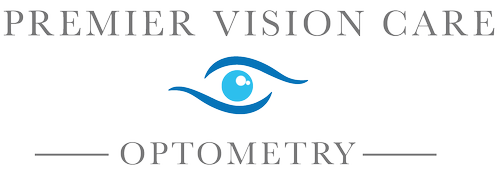
When we think of eye health, we often focus on conditions that have noticeable symptoms – redness, itching, or blurry vision. However, there's a stealthy eye disease that can wreak havoc on your vision without showing any signs until it's too late. This silent threat is known as glaucoma — a group of eye diseases that can cause irreversible vision loss if left untreated. Despite its potential severity, the good news is that glaucoma can be detected and managed through comprehensive eye exams at Premier Vision Care Optometry in Lomita.
What Causes Glaucoma?
Glaucoma is commonly caused by increased intraocular pressure (pressure inside the eye) that gradually damages the optic nerve, leading to irreversible vision loss.
Glaucoma appears in various forms, each with distinct characteristics and root causes. Primary open-angle glaucoma is the most common type, gradually affecting drainage canals and causing optic nerve damage due to increased eye pressure. Angle-closure glaucoma, also known as narrow-angle or closed-angle glaucoma, results from a narrow angle between the iris and cornea, causing sudden pressure spikes and necessitating immediate attention. Additional types include normal-tension glaucoma, secondary glaucoma, congenital glaucoma, pigmentary glaucoma, and pseudoexfoliation glaucoma, also known as exfoliation syndrome.
Glaucoma's causes encompass multiple factors:
Impaired Aqueous Humor Drainage results in pressure buildup as the fluid drainage system falters.
- Genetics play a role, particularly if close relatives have glaucoma.
- Age-related shifts in eye drainage and optic nerve blood flow increase risk, especially after 60.
- Ethnicity impacts susceptibility — African-Americans face higher open-angle glaucoma risk; Asians increased angle-closure glaucoma risk.
- Contributing factors encompass optic nerve vulnerability, medical conditions (diabetes, hypertension), eye trauma, prolonged corticosteroid use, and high myopia.
The Elusive Nature of Glaucoma Symptoms
What makes glaucoma particularly concerning is its subtle nature. In most cases, it progresses stealthily, without causing noticeable symptoms in its early stages. This is why it's often referred to as the "silent thief of sight". By the time individuals start experiencing symptoms like blurry vision or halos around lights, the disease has typically reached an advanced stage, and the vision damage may be irreversible.
Preserving Vision: Early Glaucoma Detection through Comprehensive Eye Exams
Given the silent progression of glaucoma, relying solely on symptoms for detection is risky. The only way to know if you have glaucoma is through comprehensive eye tests. These exams aren’t just focused on determining how clearly you can see, but they also include a range of tests to evaluate overall eye health. From measuring intraocular pressure to assessing the thickness of the cornea and examining the optic nerve, these diagnostics allow eye care professionals to identify signs of glaucoma even before symptoms become noticeable.
Our eye doctors use tonometers to measure eye pressure during an eye exam. This medical device comes in various forms, with some requiring contact with the eye’s surface and others using non-contact methods.
Relying solely on self-assessment or waiting for noticeable symptoms can put your vision at risk. By going for routine eye exams to get glaucoma vision screenings, you empower eye care professionals to identify potential problems before they lead to vision loss.
Schedule A Comprehensive Eye Exam in Lomita
In the realm of eye health, knowledge truly is power. Glaucoma's silent and gradual progression underscores the importance of comprehensive eye tests. By scheduling regular comprehensive eye exams with Premier Vision Care Optometry in Lomita, you can take a proactive step towards protecting your vision.

Please note we are closed for lunch 12pm -1pm.